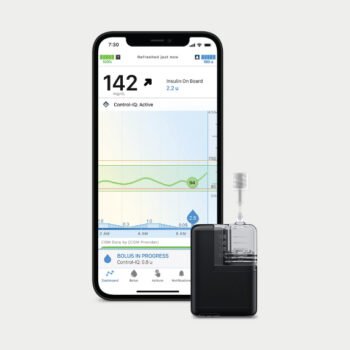Table of content
Impaired glucose tolerance is a metabolic condition that signals a high risk of diabetic incidence. It is the best sign and time to take precautions and preventive measures to avoid the invasion of severe health problems. This blog explains what impaired glucose tolerance is, what causes it, what symptoms it shows, how doctors diagnose it, and how to manage it.
What is Impaired Glucose Tolerance?
Impaired glucose tolerance is a state of having higher than normal blood glucose levels but below the level of glucose diagnosis for diabetes. Doctors often consider it a prequel to type 2 diabetes and sometimes refer to it as prediabetes. Moreover, a person with IGT is more likely to progress into the full-blown disease state—type 2 diabetes mellitus, coronary heart disease, and strokes.
Causes of Impaired Glucose Tolerance
impaired glucose tolerance is the condition in which the body’s ability to handle glucose becomes dysfunctional. Hence, the condition is usually brought about by the following factors.
- Insulin Resistance: The most common cause of IGT is insulin resistance. Therefore, in this state, the body cells do not react effectively to insulin, an essential hormone that helps glucose enter cells and be used for energy.
- Dysfunction of the Pancreas: It produces too little insulin to help regulate the glucose amount in the blood. Hence, it can be a result of wear and tear on the insulin-producing cells or damage.
- Heredity: Family history and genetic predisposition themselves play a lot in insulin resistance and impaired glucose tolerance.
- Lifestyle Factors: include poor nutrition, sedentary living, and obesity, and hence are significant in the development of IGT. Excessive weight gain can lead to insulin resistance.
- Age: If an individual is aging, then they are at more risk as at this age, the metabolic processes slow down, and the body may become inept at coping with glucose.
- Other Medical Conditions: Other health conditions such as PCOS and taking particular medicines can increase the risk of IGT.
Symptoms of Impaired Glucose Tolerance
The impaired glucose tolerance generally has visible symptoms and therefore can be hard to detect without testing. A person might have:
- Fatigue
- Increased thirst
- Frequent urination
- Blurred vision
These signs tend to occur if a person has developed type 2 diabetes but considering the risk factors that are related to IGT, one needs to be very careful.
Diagnosis of Impaired Glucose Tolerance
Specific tests that a doctor will use to diagnose impaired glucose tolerance may include quantifying the blood glucose level:
Oral Glucose Tolerance Test (OGTT)
- An overnight fasting. Afterward, the patient drinks a glucose solution. And the blood sugar is tested at intervals usually about 2 hours to analyze the body on how it handles glucose.
- 7.8 to 11.0 mmol/L (140 to 199 mg/dL) at 2 hours means that the patient is having impaired glucose tolerance
Fasting Plasma Glucose (FPG) Test
This test measures blood glucose levels after an overnight fast. An FPG level of between 100–125 mg/dL (5.6 to 6.9 mmol/L) indicates impaired fasting glucose and this might be a sign of IGT
Hemoglobin A1c Test:
The test reflects average blood glucose over the past 2 to 3 months. An A1c between 5.7% and 6.4% means prediabetes and the majority of the people who have prediabetes have IGT.
Management of Impaired Glucose Tolerance
You can manage impaired glucose tolerance through lifestyle modifications and, if necessary, with the use of medicines. Hence, the following are ways that you can manage IGT effectively:
Lifestyle Modifications:
- Eat a diet that is balanced with an appreciable intake of fruits, vegetables, whole grains, and lean proteins.
- Avoid foods with high refined sugars and carbohydrates, as they can result in spikes in blood sugar.
- consults a nutritionist to help in meal planning according to your food preferences.
Regular Physical Activity:
- Perform moderate-intensity exercise such as brisk walking, cycling, or swimming 150 minutes per week
- Exercise improves insulin sensitivity and, therefore it may contribute towards maintaining body weight.
Weight Control:
The most critical issue in IGT management is gaining and maintaining weight. Even a modest reduction in weight can produce a beneficial impact on blood glucose levels thus preventing the development of type 2 diabetes
Blood Glucose Monitoring:
Regular monitoring of blood glucose to see how you are managing your condition and prepare lifestyle changes accordingly. Continuous monitoring can be possible with CGM Devices that are available on our website at https://cgmmonitors.com/product-category/cgm-devices/page/2/
Medications:
Doctors can place you on drugs such as metformin to regulate the blood glucose and increase the insulin sensitivity if needed.
Screening:
You should be seeing a healthcare provider periodically for the assessment of your condition and your risk for the development of type 2 diabetes
Prevent the onset of Type 2 Diabetes
Thus the core objective of the management of IGT is to prevent the onset of type 2 diabetes. This risk can be able to be brought down through lifestyle adjustments and the management of the health in question.
Conclusion
Impaired glucose tolerance is a core condition that increases the perception of getting type 2 diabetes and other general health problems. Moreover, getting to comprehend its causatives, symptoms, and also management strategies can help you have the ability to take proactive steps towards bettering your health. Therefore, long-term care requires regular monitoring, lifestyle adaptations, and close collaboration with your doctor to keep IGT in good control and avert more serious complications. Hence, if you have risk factors or are concerned about impaired glucose tolerance, seek medical advice to develop a plan that works best for you and your health.












Write a comment
Your email address will not be published. All fields are required